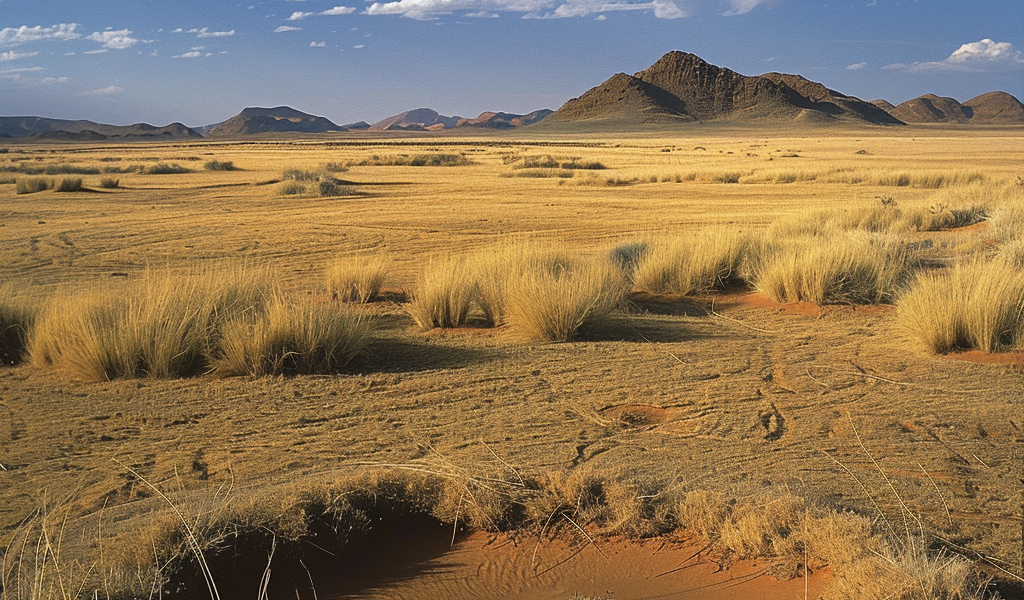Namibia’s legendary fairy circles, mysterious circular bald patches in the dry grasslands on the edge of the Namib Desert, have been the subject of much debate regarding their formation. Recently, researchers from the University of Göttingen in Germany and Ben Gurion University in Israel conducted extensive fieldwork to investigate the cause of freshly germinated grass dying inside the fairy circle.
Their findings, published in the journal Perspectives in Plant Ecology, Evolution and Systematics, reveal that the grass withers due to a lack of water inside the fairy circle. The topsoil, comprising the top 10 to 12 centimeters of the soil, acts as a ‘death zone’ in which fresh grass cannot survive for long. The new grass dies between 10 and 20 days after the rain, disproving a competing theory that suggested termite damage as the cause.
The study involved the analysis of 500 individual grass plants in four regions of the Namib, measurements of root and leaf lengths, statistical analyses, and the collection and comparison of photographic evidence. Several hundred measurements of soil moisture during or after the 2023 and 2024 rainy seasons were also taken, revealing that the topsoil is very susceptible to drying out. The soil moisture in the topsoil during and after the rainy season is three to four times lower than the soil at a depth of around 20 centimeters.
Furthermore, the topsoil is significantly drier within the fairy circle than outside during the period of grass growth after ample rainfall. Under these conditions, freshly germinated grasses cannot survive in the fairy circle as they dry out due to their inability to reach the deeper, more moist layers of soil with their roots, which are on average 10 centimeters long. In contrast, the large, perennial clumps of grass that grow at the edge of the fairy circle benefit from being able to access the soil water to a depth of 20 to 30 centimeters and below, quickly turning green after the rain.
‘With their well-developed root system, these clumps of grass soak up the water particularly well. After the rain, they have a huge competitive advantage over the freshly germinated grasses in the fairy circle. The new grass only loses a small amount of water through its spindly leaves, making it unable to ‘suck’ more moisture from the soil,’ explained the researchers.
The findings shed light on the ecological dynamics of the fairy circles and provide valuable insights into the factors contributing to the formation and maintenance of these enigmatic natural phenomena.





